Content
The flake mushroom is not the most popular species among mushroom pickers. It is found everywhere, very bright and noticeable, but not everyone knows about its edibility. Although the genus Scabies includes conditionally edible and inedible species, some of them are rated higher by gourmets than honey mushrooms. To distinguish them in the forest and try an unusual mushroom without fear, you should study the characteristics of the family.
General description of flakes
Scalewort (Pholiota), foliota, royal honey fungus, willow are different names for the same genus from the family of saprophytes that parasitize trees, their roots, and stumps. Moreover, different species prefer living, dry, almost decomposed and even burnt wood.
The genus of scales has more than 100 varieties. Mushrooms can differ greatly in appearance, taste and even smell, but they have similar features that are easily recognizable in any area. The fruiting body of any of the scales consists of a cap and a stalk.Sizes vary from large (18 cm in diameter and more than 15 cm in height) to very small specimens (up to 3 cm). The plates under the mushroom cap are thin, dense, light beige or brownish, becoming brown as they mature.
The blanket envelops the youngest specimens. With age it breaks, leaving a hanging fringe and sometimes a ring on the stem. The cap, round, hemispherical in young shoots, unfolds into a flat or slightly rounded shape, sometimes growing to the size of the palm of an adult.
The mushroom stalk is cylindrical, fibrous or hollow. It may be slightly narrowed or widened towards the base. Depending on the growing conditions, it remains short or stretches to almost 20 cm.
A distinctive feature of the genus is the presence of frequent, clearly visible scales on the cap and stem. Sometimes they stand out clearly, in other species they adhere tightly to the surface, but always differ in color from the fruiting body. In some species, the scales become almost invisible on older mushrooms.
Foliot caps are almost always colored in shades of yellow. All representatives of the genus are distinguished by the presence of an ocher shade, even in the palest specimens, which sharply distinguishes the mushrooms from the background of the forest floor and trunks. There are types of flakes with bright orange, golden, brown, and pale yellow colors.
The flesh of the cap is fleshy, creamy, white or yellowish. The leg is hard, fibrous or hollow, so it is not used for food. In edible specimens, the pulp does not change color when broken. Foliot does not have a pronounced mushroom smell. Different types have their own specific shades of taste or are completely devoid of it. The scale spores are brown, orange or yellow.
Types of flakes
About 30 species of foliots are found on the territory of Russia. The collection of such mushrooms and their culinary use have only gained popularity in recent years. Not all mushroom pickers know the distinctive features of different species. Before consuming unusual mushrooms, it is worth studying the flakes from photos with descriptions.
- Common scalyfoot - the most famous type, also called fleecy or dry. The diameter of the cap is from 5 to 10 cm, the color is beige or pale yellow with brightly colored (to brown) protruding scales. The edges of the opened adult cap are often “decorated” with a fringe of scraps of the integumentary shell. The pulp of the mushroom is conditionally edible, white or yellowish, has a pungent taste and a pungent odor of radish.
- Golden scale – the largest foliot: the cap can grow up to 20 cm in diameter, the stem up to 25 cm in height. The fruit body is bright, yellow, with a golden or orange tint. The scales are sparse, appressed, bright red or brown. The pulp has no odor or distinct taste, but is highly valued among mushroom lovers for its pleasant marmalade consistency after cooking.
Advice! Golden scale is edible, and experienced mushroom pickers call it “royal honey fungus” and collect it along with other valuable species. Cooking mushrooms must begin with boiling for 30 minutes. - Fire scale - an inedible variety of foliot. Mushrooms of this type are smaller (diameter up to 7 cm), and the caps have a copper or red tint, condensing towards the center. The scales are large, patterned, sometimes turned up, lighter in color than the cap and legs. The pulp is dense, yellow, turning brown when broken, with an unpleasant odor and an astringent bitter taste. Fire flake is classified as an inedible type of mushroom due to its low culinary qualities.
- Flake sticky is little known as an edible mushroom due to the low quality of the pulp and the unpleasant stickiness on the surface of the cap. The scales are pressed together and hardly noticeable, disappearing as the mushroom matures. The cap is medium (up to 8 cm in diameter), the leg is thin, tapering towards the top, and can stretch up to 10 cm. The creamy flesh is edible and has a slight mushroom smell.
- Scaly mucous membrane It is distinguished by a bright brown or yellow cap covered with abundant mucus. The scales are light; along the edge of the cap there are fragments of a membranous cover. In hot weather, the surface of the mushroom dries out, and mucus appears when the air humidity is high. The flesh of the mushroom is thick, yellow, with a bitter taste, and has no distinct odor.
- Destroying scale found on dry, weakened poplars, its second name is poplar foliota (poplar). The vital activity of fungi actively destroys the wood of the host plant. The caps grow up to 20 cm, their surface is light brown or yellow, the scales are light. The pulp is inedible, but only in terms of taste, there are no toxic or poisonous substances in the flakes.
- Edible scale (nameko honey fungus) is the only cultivated species grown on an industrial scale in China and Japan. For successful cultivation it requires a humidity above 90%, so it grows indoors. The mushrooms are small, the cap diameter is up to 2 cm. The fruiting bodies are pale brown or orange in color, completely covered with jelly-like mucus. They resemble honey mushrooms in taste and appearance.
- Upland scale - an edible mushroom that grows in pine and mixed forests, in clearings, among dead wood. The diameter of an adult outstretched cap is about 8 cm, young fruiting bodies are hemispherical.Regardless of the main color (yellow or red), the cap becomes greenish towards the edge. The surface is smooth, the scales are frequent, yellow, and acquire a rusty tint over time. The leg is round in cross-section, thin (about 1 cm in diameter), hollow, and densely scaly. The light color at the cap turns rusty towards the base. The pulp is odorless, except for specimens growing on pine. Such mushrooms acquire a specific aroma, but remain edible.
- Scale yellow-greenish has a second name - gum-bearing and belongs to the conditionally edible species. Most often it grows on stumps or fallen trunks of deciduous trees, sometimes found in open clearings with sparse grass. The cap of a young mushroom is bell-shaped, an adult one is spread out, slightly convex, with a diameter of about 5 cm. The plates under the cap are lemon green, the color of the mushroom body is pale yellow or creamy green, the flesh is thin, edible, odorless.
- Alder scale (moth) is more similar to honey mushrooms than to its relatives due to the fact that the scales on it are poorly distinguishable. The similarity is dangerous due to the presence of toxins in the composition. This is the only flake whose consumption poses a serious threat to health. As can be seen in the photo, the poisonous flake has a lemon tint to the entire fruiting body, the remains of a ring from the cover on the stem are noticeable, the cap does not grow more than 6 cm in diameter. The fungus prefers to settle on alder or birch wood, but can appear on a wide variety of deciduous trees. The moth does not grow on conifers.
- Protruding scaly - a type of scale that is not dangerous to confuse with honey mushrooms. Both mushrooms are edible and also similar in preparation.Young caps are round, adults are flat or dome-shaped, often more than 15 cm in diameter. The mushrooms are dry and light to the touch. Color - from straw to red or brown. The scales are frequent, clearly defined, long and curved towards the edge of the cap.
Important! The scale is scaly, in the photo and description it is similar to the fiery one, which is considered inedible, differs from it by a weak rare aroma and a slight pungent aftertaste. The pulp does not have a repulsive odor.
- Cinder (coal-loving) flake always dusted with soot and ash, because the mushroom grows in the places of old fires or forest fires. The cap is sticky, so it quickly acquires a dirty brown tint. The scales on the short stalk are reddish. The pulp is yellow, coarse, tasteless, odorless, and therefore has no value for culinary use.
When, where and how do flakes grow?
Mushrooms of the genus Scelaca grow and develop well on living or rotten trunks of deciduous trees, on conifers, in forests, parks, and on isolated trees. Less common are specimens located on the forest floor or open soil.
The distribution area of the flake is temperate latitudes with high air humidity. Mushrooms are widespread in North America, Australia, Europe, China, Japan, and Russia. It is especially common to find flakes in dead woods. Most species require dense shade to grow.
How to collect correctly
There are no false flakes that are hazardous to health and can be confused with them when collected.The characteristic roughness, easily detectable in most species, always distinguishes mushrooms from poisonous "imitation" mushrooms. Another feature that distinguishes flakes is its bright colors with an admixture of ocher.
Mushrooms are collected according to general rules: carefully cut with a knife, leaving the mycelium in place. After a few weeks, the flakes can be collected again in the same place. Most often, mushrooms appear in mid-summer; sometimes the first foliot families are found in May. The collection continues until late autumn; the mushrooms can withstand even slight frosts.
An unpleasant odor or bitter taste warns that the mushroom is inedible. Toxic types of flakes are distinguished by the broken cap or stem. The pulp changes color when exposed to air, becoming brown. Conditionally edible species are rather pungent in smell and taste; there is no real bitterness in them.
Chemical composition and value of flakes
The pulp of foliota is low in calories and contains many valuable substances. Its nutritional value and chemical composition vary somewhat depending on the location or growing conditions. Thus, flakes growing in contaminated places absorb toxins, becoming unsuitable for food.
Nutritional value of foliota per 100 g of edible part:
- total calorie content – 22 kcal;
- proteins – 2.2 g;
- fats – 1.2 g;
- carbohydrates – 0.5 g;
- dietary fiber – 5.1 g.
The flake pulp contains vitamins and minerals in significant quantities that are valuable for the human body.The vitamin composition includes: B1, B2, E, nicotinic and ascorbic acids. The mineral composition is characterized by a high content of potassium, magnesium, phosphorus compounds, calcium, sodium, and iron.
Useful properties of flakes
Mushroom pulp, after proper processing, can serve as a source of almost all essential amino acids, and in terms of calcium and phosphorus content, the flake competes with fish fillet.
Even the mucus that envelops the fruiting bodies of some types of mushrooms has beneficial properties. Thanks to the jelly-like substance, golden scales and the nameko species exhibit the following properties:
- strengthen the body's immune defense;
- normalize cerebral circulation;
- tone, relieve fatigue.
Thanks to the presence of potassium, magnesium, and iron, hematopoiesis improves, the work of the heart muscle increases, and the passage of impulses along nerve endings is normalized. Low calorie content allows the use of mushrooms in dietary nutrition for patients with diabetes. The large amount of fiber in the product prevents constipation and has a beneficial effect on intestinal function.
What harm can mushrooms cause?
Only a few of the described species can cause harm to the human body; others are rejected due to low taste. But even edible flakes have their own limitations.
Absolute contraindications and risk factors:
- Childhood, pregnancy or lactation completely exclude the ingestion of flakes.
- Simultaneous consumption with alcoholic beverages of any strength causes severe intoxication (disulfiram-like syndrome).
- With cholecystitis, pancreatitis, gastritis, taking flakes most often provokes an exacerbation.
- It is prohibited to use for food overripe, wormy specimens or mushrooms collected in places with questionable environmental conditions (including soil contamination from household waste, the proximity of cattle burial grounds, chemical plants).
- All edible types of flakes must be boiled before use. Meconic acid in raw mushrooms can cause mental disorders.
Sometimes there is an individual intolerance or an allergic reaction to edible types of flakes.
The use of flakes in folk medicine
The presence of squarrosidine gives foliots unique properties. The substance, entering the human body, reduces the crystallization and deposition of uric acid. This action alleviates the condition of patients with gout. The properties of an inhibitor with the same composition are used by official medicine in traditional treatment of the disease. The ability of some compounds in the genus scaly mushrooms to stop the spread of cancer cells is being studied.
Decoctions or tinctures are prepared from edible foliots for the treatment of the following diseases of the heart and vascular bed:
- arterial hypertension;
- phlebeurysm;
- thrombophlebitis;
- atherosclerosis.
Medicinal compositions based on flakes increase hemoglobin, help with anemia and disorders of the thyroid gland. Alder moth products are used in folk medicine as a strong laxative and emetic.
Use in cooking
In the list of edible and inedible mushrooms, flakes take the place of conditionally edible ones, which means their culinary use after preliminary boiling (at least ½ hour). In terms of nutritional value, foliot pulp is classified in the fourth category. The flake has a mediocre taste, but can be prepared according to the usual recipes for mushrooms.
Culinary uses of foliot:
- For soups, main courses, sauces, and fillings in baked goods, the caps of adult flakes or whole young, round mushrooms are collected.
- The entire fruit body, excluding the hollow stems, is suitable for pickling and marinades.
- If the pulp is bitter, it is recommended to soak it overnight, boil it, and then marinate it with spices.
Fresh mushrooms are boiled, the first water is drained, and then canned, fried or added to soups. For flakes, any recipes for honey mushroom dishes are applicable. After cooking, the pulp acquires a beautiful bronze color and an almost transparent consistency of dense marmalade.
Conclusion
The flake mushroom is gaining popularity due to its prevalence and unpretentiousness to weather conditions. Of the foliot species that grow in deciduous forests, one should distinguish between the most edible types of golden, common, and gum-bearing flakes. Moderate consumption of these mushrooms can significantly improve the health of the body, charging it with energy and supplying it with rare, essential substances.


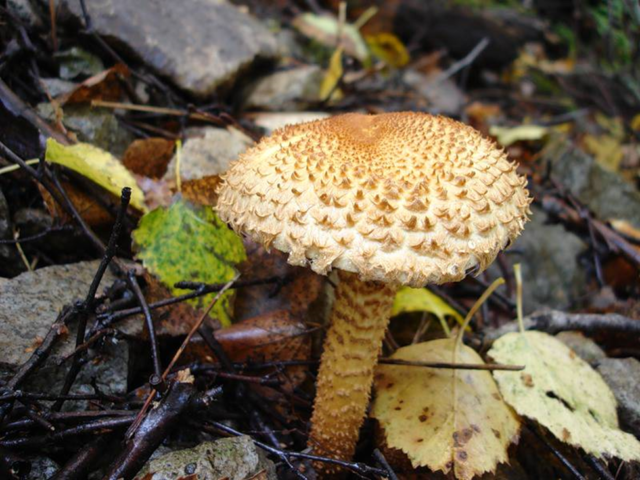
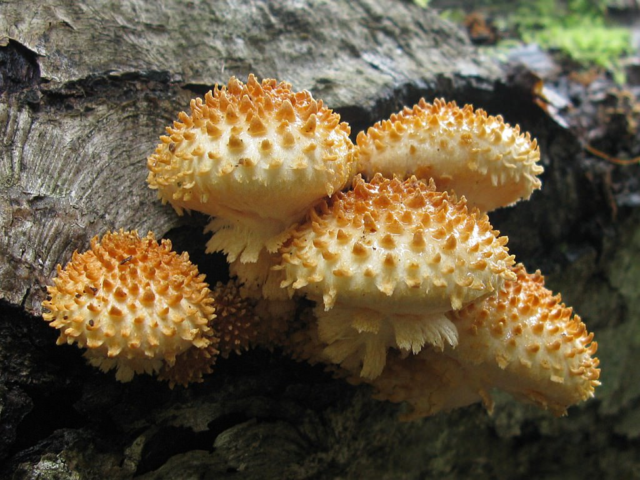

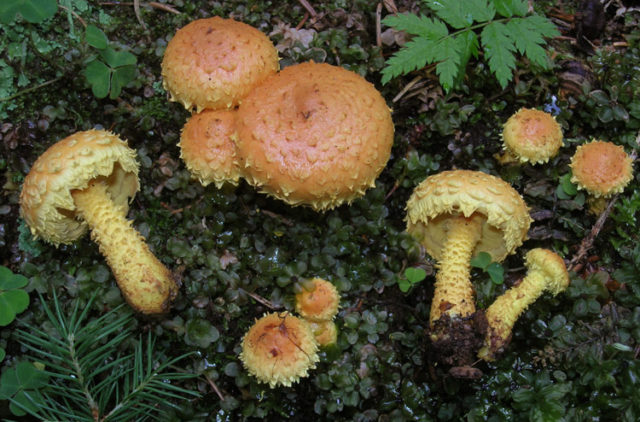
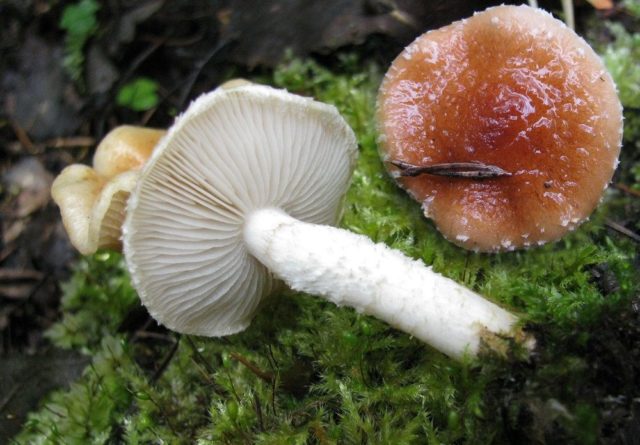
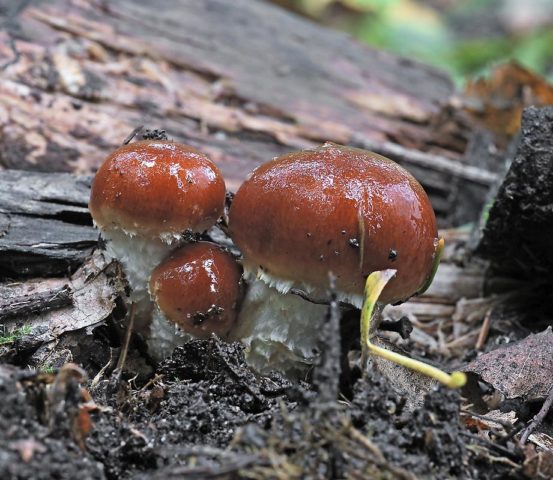


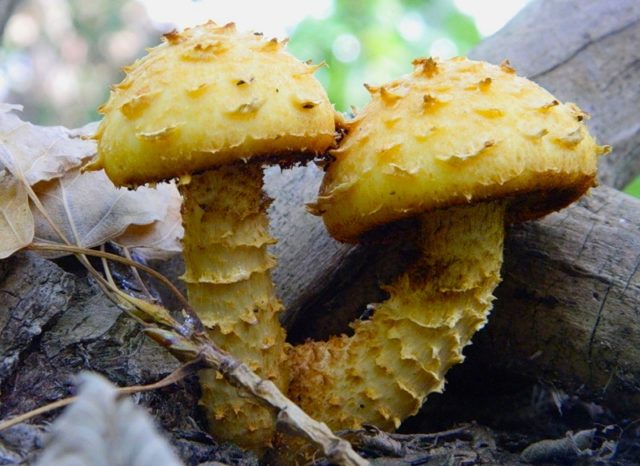


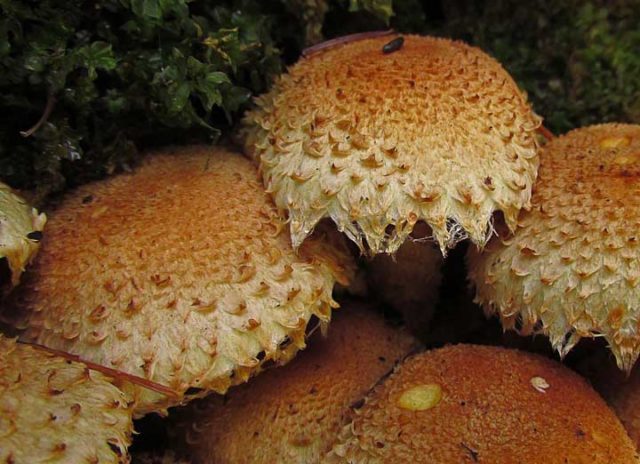
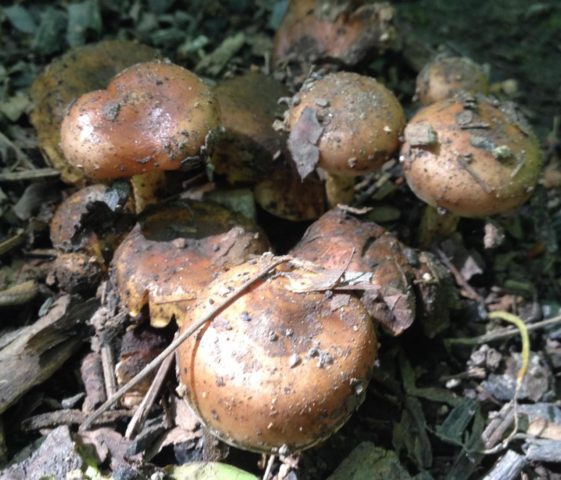
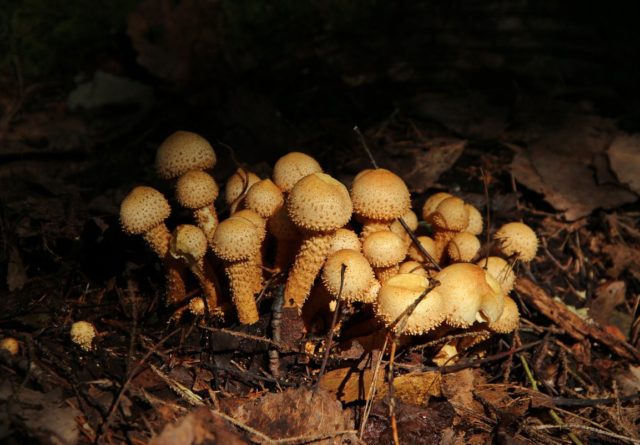
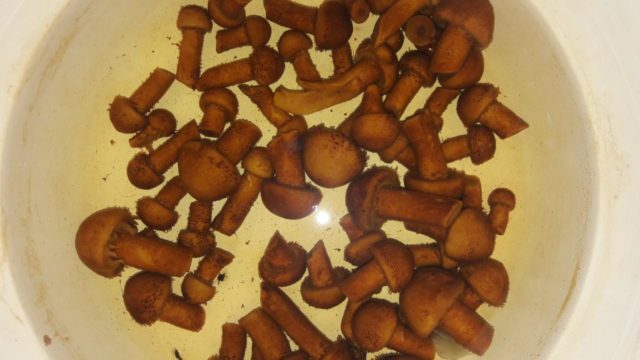
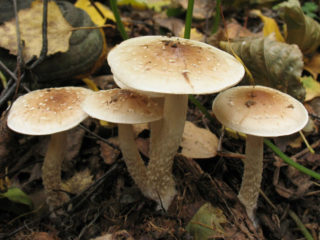
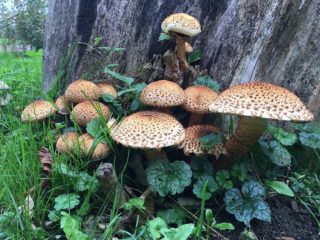
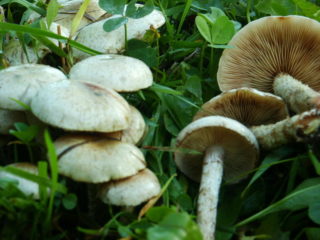
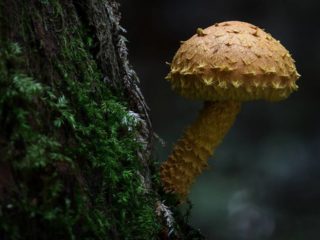

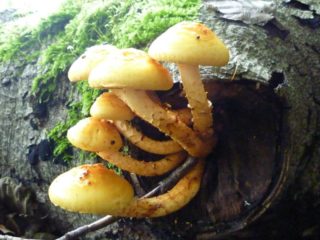
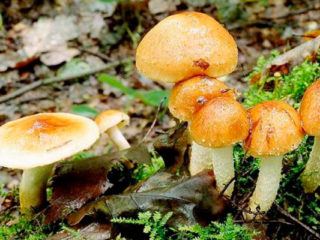
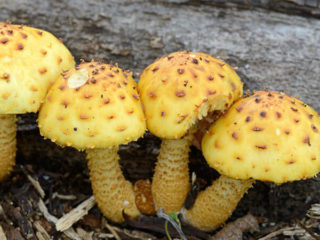
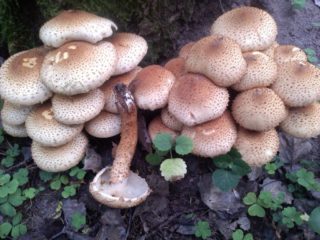
Is it possible to eat golden flakes raw, for example in salads?
Thanks in advance! I will be grateful for your answer!